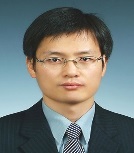Scientific Program

Bong-Seop Lee
Associate Prof. Kuyngnam University, Republic of Korea
Title: Modeling of Phase Behaviors for Hydrogen Bonding Polymer Solution using PC-SAFT Equation of State
Biography:
Bong-Seop Lee has his expertise in modeling the phase behaviors on organic molecules, polymers, biological molecules (i.e., amino acid, peptide) and electrolyte solutions (i.e., inorganic salt, ionic liquids). In the master course, he suggested the Perturbed Hard-Sphere-Chain Association (PHSC-AS) equation of state which is combined the association term in SAFT to PHSC equation of state. In the Ph.D. course, he developed the electrolyte-PC-SAFT equation of state by combining PC-SAFT and primitive mean spherical approximation. During post-doc period, he focused on the modeling of physical and chemical properties of ionic liquid mixtures. In particular, he has been studied deeply about the dissociation and association of ionic liquids. Recently, he is interested in dissociation phenomena of weak and strong acids, and the equilibrium of various materials (polymer, blend, organic solvent) at the high-pressure condition.
Abstract
Modeling of the phase behavior of polymer solutions is a crucial requirement to develop new polymer solution technologies and to design various polymer processes, such as purification, fractionation, devolatization and polymer production. In particular, the liquid-liquid equilibrium (LLE) calculation is essential for processes design of polymerization.
The hydrogen bonding in polymer solutions leads to deviate remarkably from normal solutions behaviors and is a major causes of different phase behaviors. The perturbed-chain statistical association Fluid Theory (PC-SAFT) equation of state (EoS) is applied to calculate the pressure–volume–temperature (PVT), infinite dilution weight fraction activity coefficient (WFAC), vapor-liquid equilibrium (VLE) and liquid-liquid equilibrium (LLE) of associating polymer mixtures with hydrogen bonding association such as self- and cross-association with various phase behaviors such as upper critical solution temperature (UCST), the lower critical solution temperature (LCST) and closed-loop of polymer solutions. The PC-SAFT model shows a satisfactory performance.
- Biopolymers
- Polymer Chemistry
- Biodegradable Polymers
- Bio Renewable Biopolymers
- Polymer material Science & Engineering
- Polymers for Drug Delivery
- Polymeric Biomaterials
- Biopolymers Applications
- Biopolymers for Tissue Engineering
- Bioplastics
- Polymer Nanotechnology
- Recycling & Waste Management of Biopolymers
- Future & Scope of Biopolymers
- Nanotechnology in Drug Delivery

